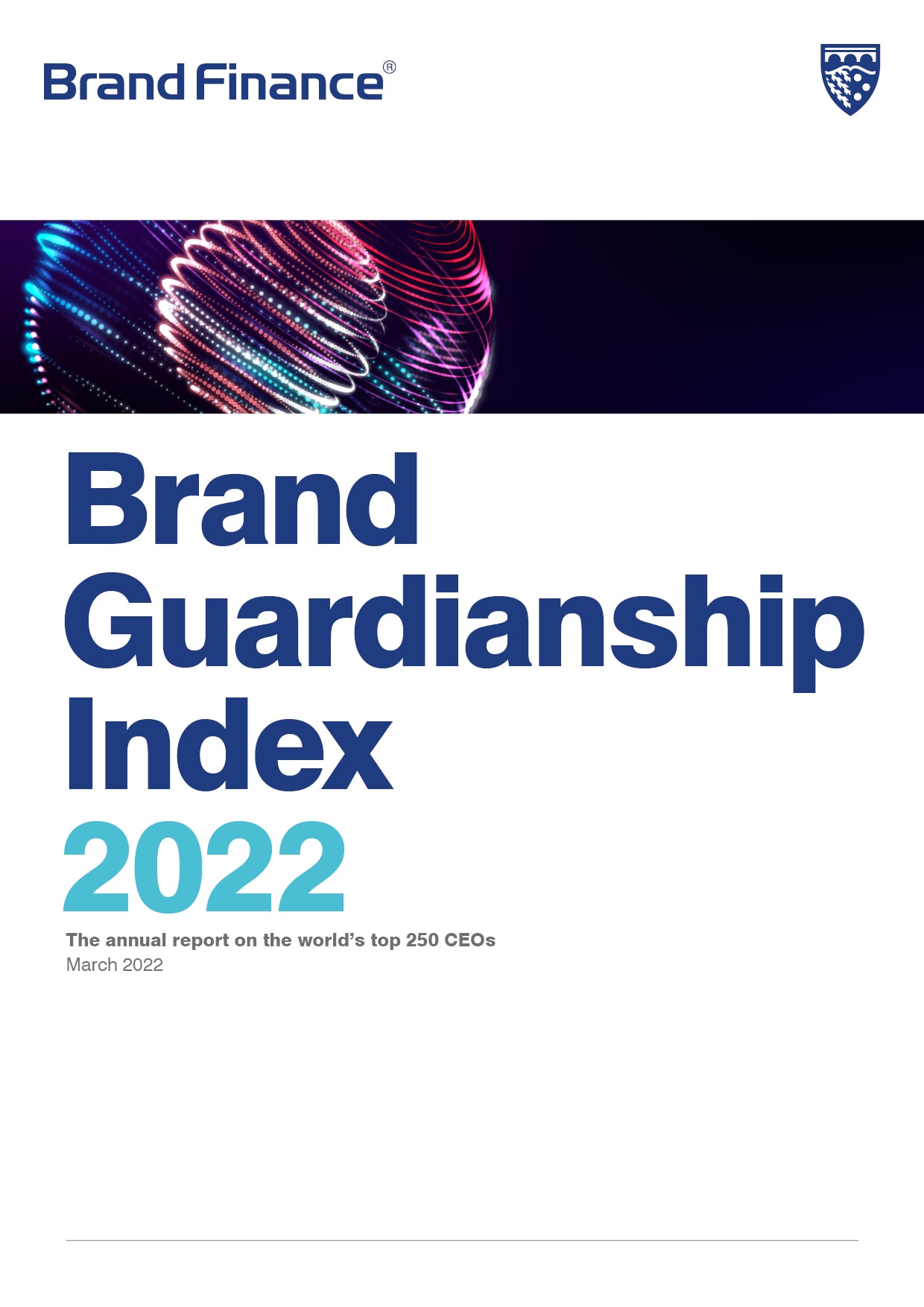This interview was originally published in the Brand Guardianship Index 2022 report.

Companies spend much time, effort and money on managing their biggest asset – their brand. However, I’ve always been curious about how much effort goes into managing the personal brand of the individual leading the business.
The CEO of any company has a very public role. They represent the company’s brand positioning and values to external audiences, and they have to role-model the brand values and culture to internal audiences. The way the CEO portrays themselves should be inextricably linked to the brand of their business.
To become a CEO in the first place, the individual is likely to be a powerful personality with a strong reputation. They will have a formidable history of success that a board of directors will find appealing as they seek someone to lead the business forward. There will probably be a discussion as to whether the candidate is a ‘good fit’ for the company. But once the CEO begins their new role, I suspect that the personal brand of the CEO isn’t something that is going to be high on the first 100 days agenda. But should it be?
The methodology for Brand Finance’s Brand Guardianship Index gives 50% of the weighting to the CEO’s brand equity. The criteria of Familiarity, Overall Reputation, Employee Approval %, account for 30% of the total assessment. Those at the top of the Index are clearly doing a great job of not only managing their company brand, but their own brand as well.
The responsibility for ensuing alignment of the CEO’s brand and the company brand falls to two people: the chair of the board and the director responsible for the company brand. The chair needs to be sure the person they have hired understands the corporate brand and their role in upholding it. The brand director needs to make sure they understand their new CEO and create a mutually beneficial relationship between the individual and the company at a brand level.
There are several things a brand director should do, with the support of the board. Firstly, create a brand model for CEO as an individual, building a clear understanding of how they want to be perceived, how they are actually perceived and what their values are. Then the brand director is able carry out a brand mapping exercise – comparing the brand model of the individual with that of the company. The result of this exercise is a brand model for the CEO that combines the best of both individual and corporate brands.

The CEO’s brand model gives the company’s PR team a platform with which they can position the CEO with total clarity & ruthless consistency. It allows the CEO to be confident that external and internal audiences will see perceive them as being aligned with the corporate brand, in a genuine way, whilst still retaining the best parts of the personality that got them the job in the first place. When you look at the names at the top of the brand guardianship list, it’s likely those CEOs are doing this already, whether by accident or design!
As an example, you need look no further than Intel. This is a company whose brand values were established by their Founder CEO, the legendary Andy Grove. He was a huge personality in his own right and was also a role-model for the Intel brand values and culture. People adored and feared him in equal measure, but under his leadership Intel became a fiercely strong brand where employees and customers knew what to expect. The most recent CEO, Pat Gelsinger, was a senior executive in the Grove years. He left the company to become a CEO elsewhere and returned recently after the company had suffered some poor years. Gelsinger recognises the power of brand values and culture.
In his first note to employees as CEO he said ‘We must reignite our culture to attract and motivate the best engineers and technologists on the planet….with a vibrant, inclusive and open culture. We need to bring back some of the Groveian disciplines for direct, transparent and data-driven decisions and accountability.” Gelsinger’s CEO brand is a mix of his own strong personality and the core values that made Intel into such a powerful company.
So what are the lessons from all this? CEOs need to remember that the corporate brand is stronger than their own personal brand and will continue long after their tenure ends. And it requires humility to give up part of their own identity for the duration of their role to take on the mantle of the corporate brand.

